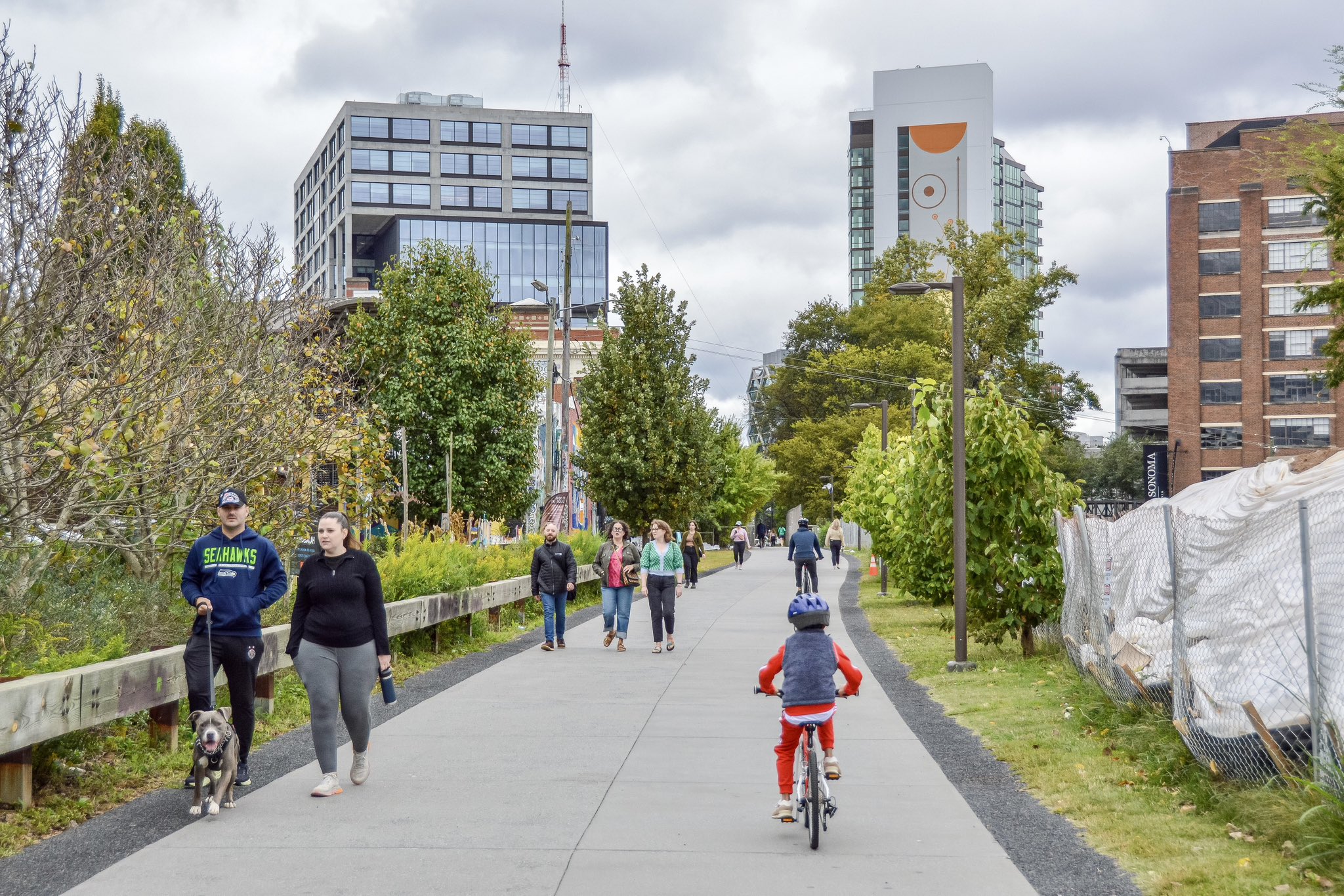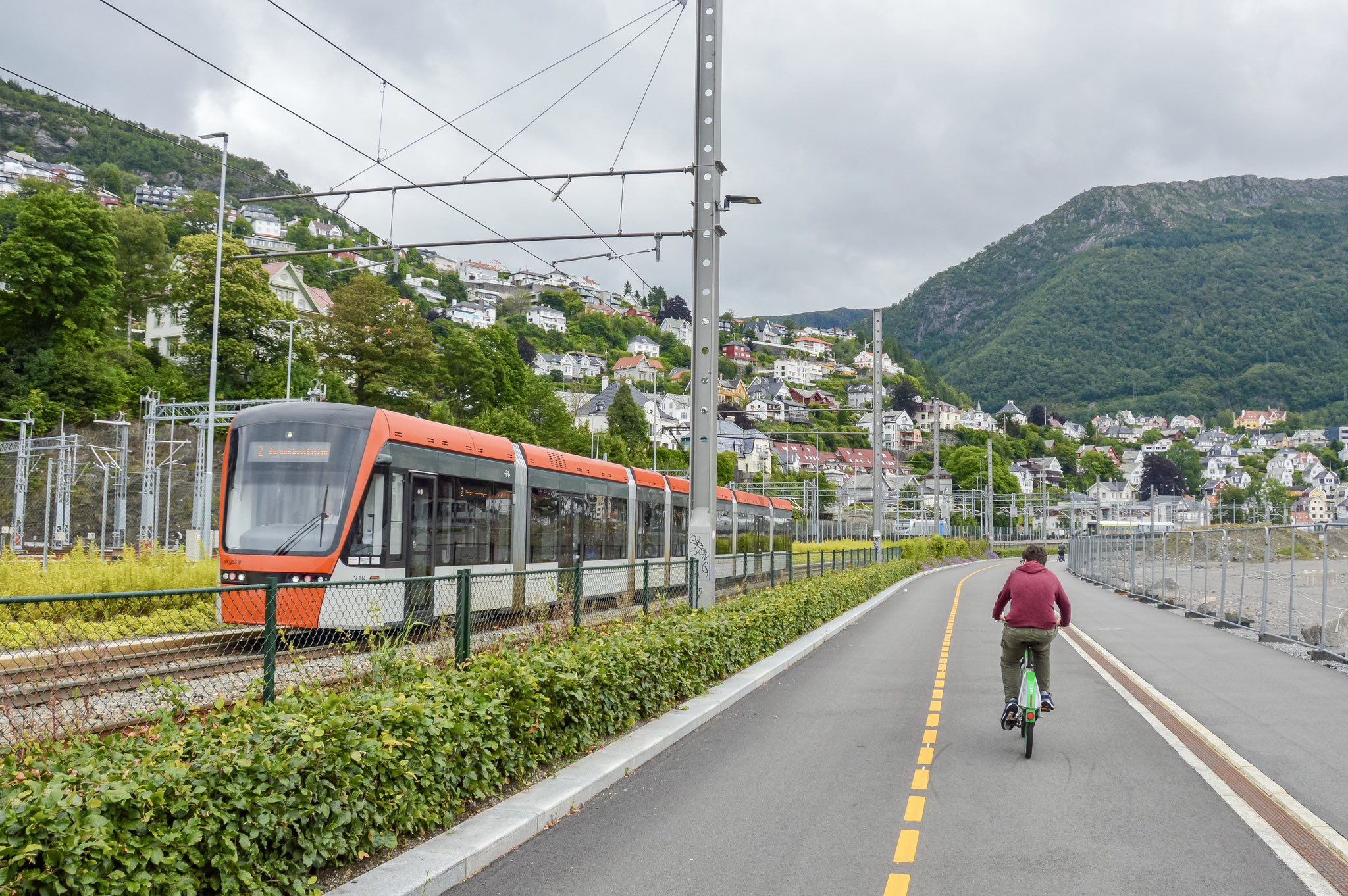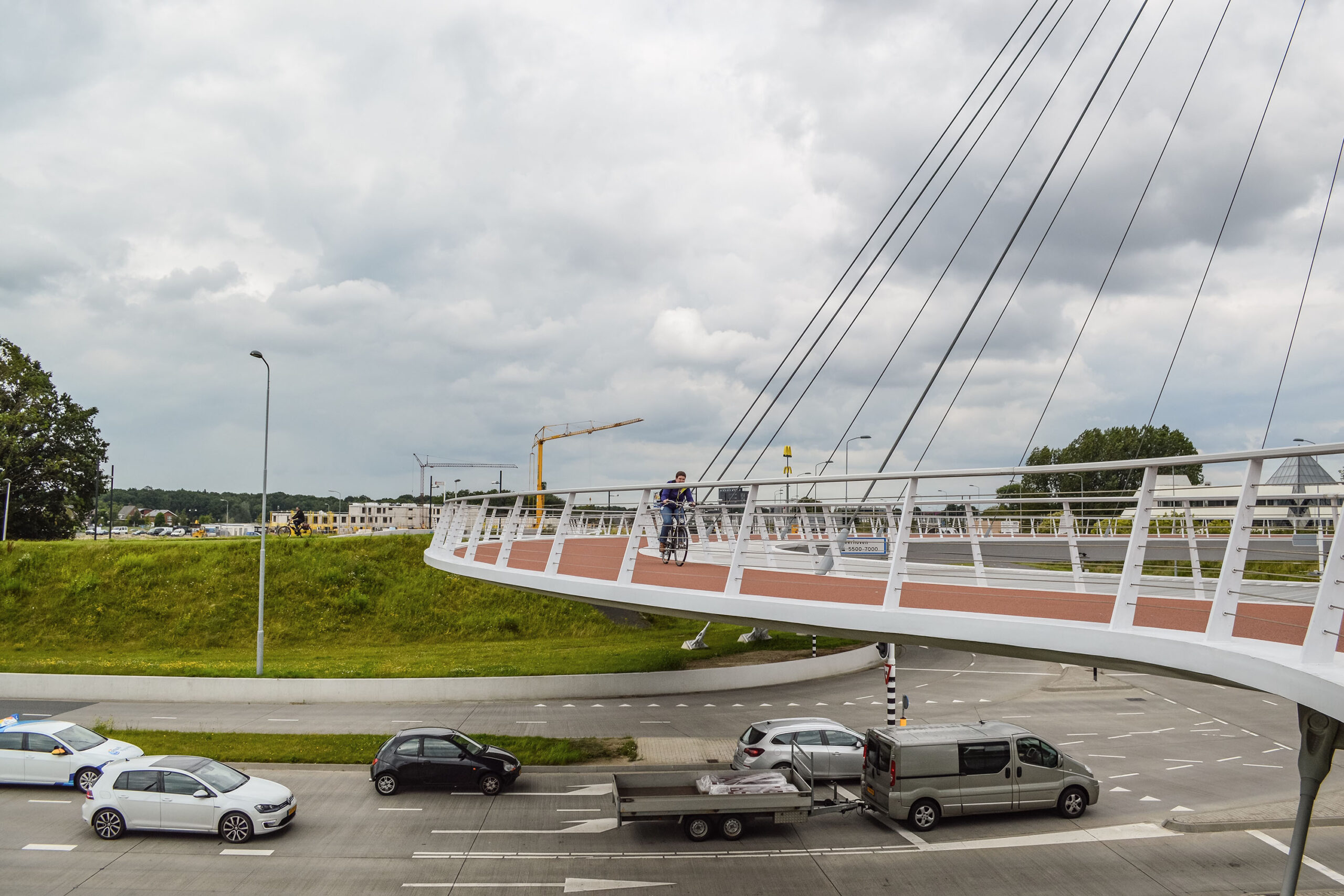Putting Your City on the Map with Cycling Infrastructure
Editie: 31 - Global vs. Local
Published on: 24 juni 2024

When Royal Philips Electronics decided to depart Eindhoven in the early 1990s, the city abruptly found itself in a grave economic and existential crisis. The corporate giant had epitomized the industrial heart of the Netherlands for more than 125 years, and was inextricably linked to the city’s planning, development, and economic vitality. Like many places after the Second World War, this meant separating the main functions of the city: dwelling, business, and commerce; and bridging those distances with wide arterial roads designed solely for what was seen as the mass mobility mode of the future: the private automobile.
But rather than accept the fate of their single biggest employer relocating their head offices to Amsterdam and manufacturing facilities overseas, city officials leveraged this crisis to pivot away from its industrial past; attempting to attract new start-ups and revive their region as the “Silicon Valley of Europe.” With this flow of new energy and ideas, Eindhoven started to rebrand itself as a city of technology, design, and knowledge. And as part of this rebranding process, it also wanted to rid itself of old-fashioned views, like being a car town. Reinventing itself would not be easy, but with the right strategy, the humble bicycle could play a central role in that process, selling Eindhoven as a globally renowned cycling city.
Thus began a steady flow of prestige infrastructure projects that firmly put Eindhoven “on the map”. Firstly, the 2009 transformation of 18 Septemberplein—the city’s central square—from a surface car parking lot into a vibrant gathering space, with 1,500 underground bicycle parking spaces accessed via escalators covered by a pair of iconic, cone-shaped glass-and-concrete structures. The second, the click generating Hovenring, its now world-famous suspended bike roundabout, opened in 2012 at a cost of €6.3 million. Two years later, emboldened by these successes, the city built a luminous LED cycle path inspired by Vincent van Gogh’s beloved “Starry Night” painting in the nearby village of Nuenen, where he lived and worked for numerous years. Then in 2016, Eindhoven attracted international headlines again when it opened—with the assistance of John Cleese himself—the “Silly Walk Tunnel” as a nod to the immortal Monty Python’s Flying Circus sketch.
This strategy of creating economy opportunities with cycling is not isolated to Eindhoven, although they certainly pioneered it. Many other global cities are in the process of using two-wheeled transport to put themselves on the map. Cycling is now often seen as a branding tool for attracting new employers, talent, and tourists; and giving residents a new pride of place. This is happening in the unlikeliest of locations, like in Calgary; a sprawling Prairie city in the heart of Canada’s “Oil Country”. There, after a downturn in the local economy due to the deflated price of oil in 2008, and a downtown vacancy rate hovering between 25 and 30 percent, officials were forced to pivot and view cycling as a way to attract new economies to its urban core.
The opening salvo came in 2012, with the ribbon-cutting of the eye-catching Peace Bridge, a stunningly beautiful, yet at-the-time controversial walking and cycling connection across the Bow River. Designed by Spanish architect Santiago Calatrava, the structure initially attracted outrage, simply because it was the city’s first piece of dedicated active mobility infrastructure, and the first time that planners would make aesthetics a priority. But the criticism soon subsided when the iconic bridge opened, and it quickly was embraced by residents and tourists alike; becoming the most photographed structure in the city and used in everything from real estate to hotel advertisements, as Calgary’s first bit of “bike bling”.
The construction of The Peace Bridge was an undoubted turning point for Calgary, laying the groundwork for their next big infrastructure project: a downtown cycle track network. To cater for the growing number of cyclists entering the city centre across the Bow River, council voted in 2014 to build a “minimum grid” of physically separated bike lanes as an 18-month pilot project using light, quick, cheap materials; allowing engineers to adjust their design and measure their success. The next year, Calgary’s downtown cycle-track network was delivered two months early and $2 million under its $5.75 million budget, reallocating just two percent of the downtown street space to induce 1.2 million bicycle trips over one-and-a-half years, with little-to-no driver disruption. In 2016, councillors voted overwhelmingly in favour of making the downtown cycling network permanent; realizing that if they want to attract new industries to their city, they first needed to build a city that’s worth moving to.
The Norwegian City of Bergen is another example of one that has caught international attention with its own “bike bling”, although—like many of these high-profile projects—it serves a very practical purpose. In April 2023, officials opened the world’s longest purpose-built pedestrian and cycling tunnel: the 3,000-metre Fyllingsdalstunnelen. Blasted through the base of the 477-metre tall Løvstakken Mountain, the €27-million project directly links the Fyllingsdalen and Mindemyren neighbourhoods of the city. It includes a 3.5-metre-wide bike lane and a 2.5-metre-wide lane for walkers and joggers, a variety of art installations, as well as colourful lighting to break up the monotony and offer a sense of direction. This project came about as a by-product of Bergen’s new Bybanen tram line. Running the tracks through the mountain required a parallel evacuation tunnel, so planners decided to make it multipurpose by creating a walking and cycling link. The Fyllingsdalstunnelen is part of a larger transformational project: an eight kilometre long “green spine” connecting the southern suburbs to Bergen Station. It includes a cycle- and (grass) tramway, parks, and rainwater retention sites; all to be lined with new development in the coming years.

For a glimpse at Bergen’s future, and the benefits of greenway-oriented development, one need to look no further than Atlanta’s Beltine. More than just a rails-to-trails transportation project, it is a transformational vision that will eventually connect 45 neighbourhoods with 53 kilometres of multi-use paths, 35 kilometres of light rail, 1,300 acres of green space, 5,600 units of affordable housing, and 450 works of public art. As concrete proof of the tremendous latent demand for low-car spaces in America, when the full loop is finished around the city in 2030, it will create over $10 billion in economic benefits and 50,000 permanent jobs; and is already attracting new housing, offices, shops, and restaurants (Atlanta Beltline, n.d.).
Back in Eindhoven, a growing number of international delegations—from elected officials to civil servants—are visiting the city through study visits organized by the Dutch Cycling Embassy. While these visitors always make a point of stopping in Amsterdam for a heavy dose of two-wheeled inspiration, they often depart Eindhoven—where cycling has since risen to a respectable 28 percent of all trips and 43 percent of all short trips—with much more practical ideas and motivation. Those experts and decision makers actually find Eindhoven more interesting because it’s more relatable. It has big infrastructure for car traffic, and all the barriers associated with it, and despite that a decent cycling mode share, and projects like the Hovenring. Then realize that transitioning from a car town to a cycling city isn’t just possible, it has benefits that stretch far beyond those we typically consider.

The amount of money Dutch cities spend on cycling often seems extravagant to outsiders, but it happens because they view each penny as an investment—in a healthier and happier population, a low-congestion and low-maintenance road network, and a public realm where people want to spend time and money. This stretches far beyond a few ‘prestige projects’ like the Hovenring or the underwater bike parking at Amsterdam Centraal. It means building cohesive networks of high-quality cycling routes, reducing the speed and volume of cars filtering through the city, and combining cycling with public transport to capture the synergy between these two sustainable modes. Then, and only then will cities around the world enjoy the same quality of life as the Dutch population, all made possible by harnessing the power of the humble bicycle.
On the author: Chris Bruntlett
| Chris Bruntlett is International Relations Manager at the Dutch Cycling Embassy, a public-private partnership that represents the best knowledge, experience, and experts from the Netherlands. As a long-time campaigner in Vancouver, he fell in love with Dutch bike culture in 2016, inspiring him to author the book, “Building the Cycling City: The Dutch Blueprint for Urban Vitality”. Chris uses his knowledge and passion to share lessons for global cities wishing to follow their footsteps, and become better places to live, work, and of course cycle. His latest book is “Curbing Traffic: The Human Case for Fewer Cars in our Lives”. |  |
References
Atlanta Beltline (n.d.). Securing Economic Resources to Get the Project Done. https://beltline.org/the-project/project-funding/
Mail the editors